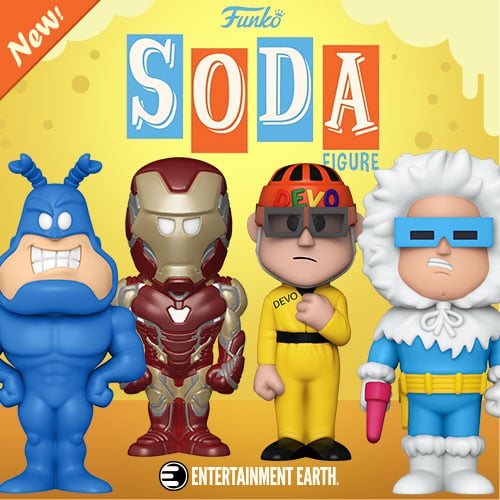Defiance is not just one of the most anticipated shows  of 2013 it is also a highly anticipated video game. On March 27 Defiance Kevin Murphy and Vice President of development for the video game team at Trion, Nathan Richardson took some time to talk about Defiance.
of 2013 it is also a highly anticipated video game. On March 27 Defiance Kevin Murphy and Vice President of development for the video game team at Trion, Nathan Richardson took some time to talk about Defiance.
The following is the transcript from that conversation.
Maureen Granados: As you all know by now, Defiance is our highly anticipated project from Syfy and Trion Worlds. We’re very excited that the game is going to be released on April 2 and the show will premiere on April 15, Syfy Mondays at 9:00 p.m. ET.
So we’re going to kick off our first conference call with our Executive Producer and show runner for the series, Kevin Murphy, and Trion’s Vice President of Development, Nathan Richardson for all of you gamers out there. So without further ado I will turn it over to your questions.
Operator: And our first question comes from the line of Erin Willard from SciFiMafia.com. Please proceed with your question.
Erin Willard: I was at the press tour in October and I was totally blown away by the amount of work that’s gone into the show and into the game. And Kevin, I’ve seen the first four hours of this show and I am totally in. Thank you so much for all that you’ve done for the show.
Kevin Murphy: Thank you for watching.
Erin Willard: Absolute treat. And it just kept getting better, which is so exciting for me. So could one or both of you fill us in on how this all started?
Kevin Murphy: I’ll jump in on that. It’s been five years in the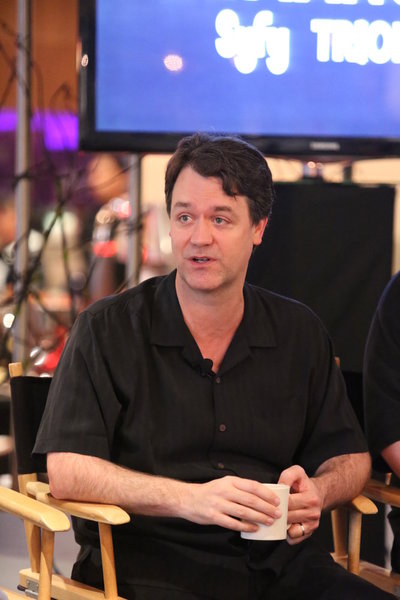 making. About five years ago, Dave Howe from Syfy and Lars Butler from Trion got together because Syfy had made a large investment in Trion and they were looking for a project to do together.
making. About five years ago, Dave Howe from Syfy and Lars Butler from Trion got together because Syfy had made a large investment in Trion and they were looking for a project to do together.
So they looked through the various properties that, you know that Syfy had in development and they settled on this sort of a world. It took five years of development to get the videogame up and running, which is not unusual for a videogame, as I think many think, you know, can attest. And it took that long to kind of figure out how it would work as a television show. I came on board the project about two years ago and kind of got us over the finish line, in terms of the shared world.
And the big idea really was about, “How do we create a big universe with two distinct portals that would allow you to enter that world?” And by creating a new world it gave you sort of an infinite sort of number of permutations of ways to tell stories and ways to find characters.
Nathan Richardson: Yes, also part of it of course is that it’s happening in two different geographical locations so that instead of the problems that you have with licensed games and licensed shows, is that they’re usually restricting each other, so with geographical difference, and also of course selecting the right kind of world and intellectual property that actually fit for both mediums, both parties are actually quite free to tell pretty compelling stories.
Kevin Murphy: Yes, what’s really special about this is that, unlike an adaptation, rather than one intellectual property being iterative of the other, the game and the show are equals. And they’re – and because they were developed together, the mythology is seamless.
And whenever there’s something that serves the needs of the game, we work it into the mythology of the show. And if there’s something that’s important for the show, the game works it into their mythology. And that allows for, I think a better gaming experience and a better, hopefully, television viewing experience.
Erin Willard: Right, well I think it’s actually a brilliant concept and I can’t wait to see how it all plays out. Thank you both very much for your time.
Kevin Murphy: Thank you for the question.
Operator: Our next question comes from the line of Michelle Alexandria from Eclipse Magazine. Please go ahead with your question.
Michelle Alexandria: Hello, it’s a pleasure to speak with you again. I was also at the digital tour last year and I have to agree with the previous caller that the sets are amazing. And when you actually watch the show live, it really brings everything into context, into focus. And I had a surreal experience watching the show because I’m watching it and I was all, “Wait a second, that’s from the game.”
When you – you’re putting all of this together, how do you draw the line or tell where the line is between what’s going to be strictly game focused and what’s actually going to make it off the screen, and then what’s the conversation like in terms of how those two are going to play off of each other?
Kevin Murphy: Well one of the things that we learned early on, that we needed, was a way to keep the mythology of the game and the mythology of the television show up to-date and current because we were having real trouble communicating.
Because at Trion they would do a big beautiful bible of everything that was going on in the game, and we would use that as a reference. And we would pull something out and – like some creature or some political figure – and they’d turn out say, “Oh sorry, that’s not it anymore, we took that out.” And they would have the same frustration with us.
So we created the position of a mythology coordinator who serves as kind of an editor between what goes into the game and what goes into the television show and helps define connections.
And make sure that there’s nothing we do in the show that contradicts the reality of the game to make sure that when we do an episode with Hell Bugs in the television show, that we’re being accurate as to the biology and what they look like and how they breed and what the various subclasses of Hell Bug are.
And that everything that we’re doing is exactly so that when a gamer watches the show, they really have a feeling of recognition that this is the same monster that they’ve been having fun fighting and killing in the game world.
Nathan can speak to this too, but that’s really been a big help in terms of keeping everything straight and keeping everything unified.
Nathan Richardson: Yes, I think that the way that this is actually happening is that we have this repository – the world in its entirety, but it’s also simply talking quite a lot together, to say the least.
Kevin Murphy: Yes, we’re like on the phone like at least like about like 9, 10, 11, 12 times a day.
Michelle Alexandria: Can you talk a little bit about the original language created for this show?
Kevin Murphy: Sure, sure. So David Peterson is not only our language creator but he’s also our Cultural Consultant on the show because he really has a mind for that sort of nuance. And from his perspective, you can’t really create a realistic language without knowing a lot about the culture of the language – the language creators.
David Peterson, prior to Defiance, is best known for creating the Dothraki language on the HBO series Game of Thrones. And this presented an even bigger challenge to him because the Dothrakis on Game of Thrones are illiterate; they don’t have any written form of their language.
We asked them to come and not only create a spoken version of Irathient, but also a written version; a spoken version of Castithan; he’s also done Indogene; and Liberata is a work in process, we don’t use that as much. But at this point, last time I checked, we were at 1,962 Irathient words and counting.
And there are complete rules for grammar, syntax, verbs, and irregular verbs; there’s an 150-page orthographic document that he’s created. And along the way there are things he’s created in terms of what our alien cultures are and who they were on their home world that I don’t even completely understand.
Like every now and then when he was creating the Irathient language, I would get this weird phone call from David and he’d go, “Is it okay if the Irathient home world sky was kind of red?” “Okay David, sure.” “Great, that’s going to make everything work.” And I had no idea why a red, Irathient sky made the language work but I know that David knows, and that’s what’s important.
So any time we have a question about culture… He created the Castithan caste system, which are called liros, and all of that is all in that magnificent brain of his.
So that’s really how we do it day-to-day, and Nathan could speak to how they do it in the videogame. But in the show we basically write in English and we put carrots around it and say what it is we want the character to say. David chooses the appropriate language and then makes up the words and the syntax and then adds it to the overall vocabulary. And the languages get bigger and bigger and grander and grander.
Nathan Richardson: Yes I mean the way that we do it in the game itself is essentially not to  the same extent. It’s more that we pick up individual, for example, swearing and stuff like that from different languages which add a certain type of flavor to the conversations that are happening in the cinematics in the game itself because obviously you aren’t required to know caste to be able to play the game.
the same extent. It’s more that we pick up individual, for example, swearing and stuff like that from different languages which add a certain type of flavor to the conversations that are happening in the cinematics in the game itself because obviously you aren’t required to know caste to be able to play the game.
Operator: And our next question comes from the line of Jamie Ruby from ScifiVision.com. Please proceed with your question.
Jamie Ruby: The one thing I wanted to ask is about how they interact. I was curious, from what I’ve understood from everything, you know, that you guys have said before, that you know, events that happened in the game and on the show are kind of going to cross over.
But my question is, I assume when you buy the actual game that there’s like an endpoint. So if somebody finishes the game right away, how do they still get kind of that crossover content? Can you still play in world or do you got to start over or?
Nathan Richardson: No. I’ll jump in first and say like that, there’s actually a couple of angles to that question and the answer itself, simply because that the game is based on a main storyline, of course, which is telling the story and getting you immersed. But it also has so many other different aspects of the online aspect, which provides much more longevity in game play.
What happens there is that we have the crossover elements of course between the show and the game, but there are also live events happening in the game itself when it all continues. So you’re still affecting the world itself, even though the show has actually finished its last episode.
I mean what happens essentially in the game is material for actually what would happen on Season Two. So the opportunities, like the number of opportunities that we have to actually work with how we play the game and how we work with Season Two is essentially too many options.
Kevin Murphy: Yes, one of the things that’s really exciting now that we’re going through the process of beginning to think about the shape and form of Season Two, is now that the game is actually up and running and the TV show is up and running, we’re now going to be able to really plan, you know, things for Season Two that we can be setting up because a lot of the game is being created as we go along because it’s constantly changing and there’s new levels and new missions being introduced.
So that’s something that, you know, we’re really looking forward to, because as we move forward we’re able to really sort of make the convergence between the two even more – even deeper and more meaningful as we get into a Season Two.
Jamie Ruby: Great. Can’t wait to see it. And then I also wanted to ask if you can you kind of just talk a bit about how the different designs for the races came about.
Kevin Murphy: Well the – do you want me to jump on this one?
Nathan Richardson: Yes.
Kevin Murphy: Well when we were first figuring out the races for the pilot, we had the initial sort of like idea came from Trion, but then because we had to figure out, okay, we could only have so many races that are CGI just because of the limits of the budget and the limits of technology in terms of acting.
So we knew that we were going to have to use flesh and blood actors. So we really had to look at, “What can we do that’s cost-effective?” And some of the decisions about how 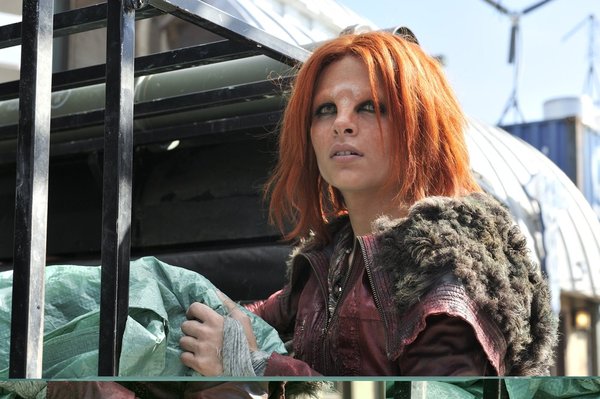 the aliens look, like for the Irathients, we decided that we would do most of what they do with makeup and we would use a forehead prosthetic.
the aliens look, like for the Irathients, we decided that we would do most of what they do with makeup and we would use a forehead prosthetic.
And so that affected the way that Irathients look in the game. Of course in the game you can do anything because it’s an entirely digital domain, but that’s a case of the game sort of cooperating with us.
The Castithans, we decided we would settle with contact lenses. And we did a lot of experimentation with makeup to make them glow, but they don’t actually have any latex.
The Sensoth and the Liberata are very expensive suits, so we see fewer of those aliens. And the Indogenes are also very expensive because they’re an entire latex head.
But we really had to look at, “How do we make it not look like rubber suits?” We looked at sort of like the way that we were painting the latex to make sure that it didn’t shine under stage lights. And all of this had to get sort of reverse engineered into the look of the game. And this is a case where the game was incredibly, you know, they were generous and wonderful teammates in kind of adapting to our needs.
On the other hand, one of the other things that we did was we used – we appropriated the Volge from the videogame for the pilot. And they appear in a couple of other episodes.
But what we discovered is, when you put them in kind of a photo-realistic environment with, you know, with actual flesh and blood actors, they looked a little too Buck Rogers, they didn’t look grounded.
So Gary Hutzel, who was our Visual Effects Supervisor, sort of did some tweaks to the design and then ran it back with the folks at Trion. And happily, the folks at Trion really loved what, you know, what Gary did and so they incorporated those changes into the design of the game.
And I think we ended up with something that was better than we would have come up on the TV show on our own, and it was better than the original first pass that Trion had and the gamers as the beneficiary of that sort of cross-pollination of the artists.
Nathan Richardson: This is one example of where these two different mediums and we have something that could work better than either of them, but actually getting better to know each other and going back and forth like that for example with the Volge, it ended up it being a much better result in the end so that was kind of a pleasing surprise for both of us I guess.
Jamie Ruby: Okay cool. Well I really love all the visuals, and especially the Indogene because it was really cool; we got to see that close-up at the press tour, it’s I don’t know, kind of amazing, so thanks.
Kevin Murphy: Yes, that was the costume parade.
Jamie Ruby: Yes.
Kevin Murphy: That was – what she’s referring to, for everyone else that’s on the call is in – for anyone who wasn’t at the press tour, is we did a costume parade with all of the aliens done up in their makeup under lights so everyone would get a really great look. It was like the world’s most elaborate episode of Face Off.
Jamie Ruby: It was really awesome. So thanks for doing that; that was really cool.
Kevin Murphy: That was fun to do.
Operator: And our next question comes from the line of Tony Tellado from Sci-Fi Talk. Please proceed with your question.
Tony Tellado: Hi gentlemen, great to talk to you. Very excited. I wasn’t at the press tour but I was in San Diego where we had breakfast, and that was really neat with the actors and everything, really enjoyed that.
I want to ask you, as far as crossover is concerned, how much crossover will there be during the first season from characters in the series into the other city and the other – in the actual game?
Kevin Murphy: There’s a fair bet. I’m going to be a little coy about it because I also don’t want to – I don’t want to lay it all out and create a situation where we have spoilers.
Tony Tellado: Sure.
Kevin Murphy: But we are passing several characters back and fo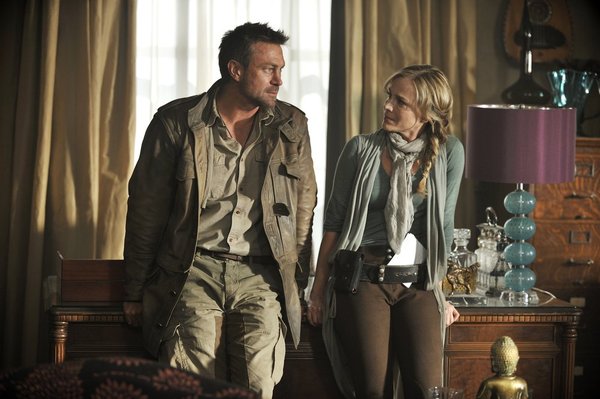 rth in both directions. And one of the things that we have to be very careful about is, I like to – if you remember from like old like high school probability class or whatever, where you had the Vin diagram where you would have the two big circles with the intersecting middle.
rth in both directions. And one of the things that we have to be very careful about is, I like to – if you remember from like old like high school probability class or whatever, where you had the Vin diagram where you would have the two big circles with the intersecting middle.
If you imagine that there’s one circle that is – that’s gamers, and another circle which is television viewers, and you look at the point where they intersect, those are sort of our super-fans, our people who are going to immerse themselves completely in the world.
And what we want to do is create an amazing experience for all of our immersive super-fans, while at the same time making this enterprise accessible to the people who are just interested in the television show or just interested in playing the game. And hopefully over time we intrigue them and tickle their curiosity and get, you know, them to you know, get a bigger and bigger sample and create more super-fans.
But to do that we have to be very, very tricksey (sic) in how we go about creating our crossovers because we have to make sure that when we do a crossover element that the, you know that the one side doesn’t feel that they’ve missed a chapter or they don’t feel frustrated or, “I can’t enjoy this television show if I’m not also playing the game so I’m not going to bother watching the television show.”
So like to give you a for-instance, because I think a lot of you have seen the pilot, if you – when Nolan and Irisa get the terra-spire at the beginning of the pilot, they take out a glowing little GEM, which is not really commented upon. Nolan refers to it as a whatchamacallit and – or, “Do you have the whatsit?” And they put it into the terra-spire and that’s what allows them to get the Terrasphere, which is the big deal later in the pilot.
If you’re a television viewer, that moment will probably pass by you without incident. But if you’re a gamer, you’re going to have a huge emotional connection for that because that is a big part of a mission in the game that the players will be playing.
And that before Irisa crossed from the game into the show, that is – that’s the piece of loot that they – that Nolan and Irisa help (unintelligible) get. And Nolan and Irisa appropriate it from the player at the end of the session before they come into the game.
So if you’re a gamer, your reaction to that is going to be like, “Oh my god, those bastards stole that from me. I’m mad about that.” But – and I’ve got this emotional connection to the object so later, when the object gets stolen again from Nolan and Irisa, it’s kind of cool for the gamer. But again for the television viewer it’s not – they don’t feel that they’ve missed a chapter.
So we’ve had to be really, really careful at making sure that our crossovers are done in a way that they work on two levels, that they work for (unintelligible) viewer and the super-fan.
Nathan Richardson: Yes, I also think that the crossover simply is a very good descriptive word for it because we literally are crossing over the storyline back and forth between certain elements there.
And it’s important to emphasize that you don’t have to play the game to watch the show. The individual on each side will – won’t be without context for you.
Tony Tellado: Very cool. I think what’s also appealing is the storyline, the father and daughter. Also a Romeo and Juliet kind of storyline, and you know, two families kind of going at each other. And this – just all of that. The planning stage must have taken…
Kevin Murphy: The father – you mentioned the father and daughter, the inspiration of that – for that was actually one of my favorite movies, is Peter Bogdanovich’s Paper Moon.
Tony Tellado: Cool.
Kevin Murphy: And that’s kind of who I based the Nolan/Irisa relationship on, was Ryan and Tatum O’Neal’s’ characters.
Tony Tellado: That’s really cool. The planning must have taken like months to get all that storyline – all those storylines, kind of probably spending a few nights in the writer’s room getting all that together.
Kevin Murphy: Absolutely. I’m standing on the shoulders of a lot of really, really talented writers and creative people that came before me. And it’s – and it was – it just you know, getting this right was really, really important. And it took – you know, we did not squander the five years it took.
Tony Tellado: That’s great guys. My – so far the character that I like is the doctor. I just love her sarcasm.
Kevin Murphy: I love her. That was – a little bit of story about the (unintelligible) and she 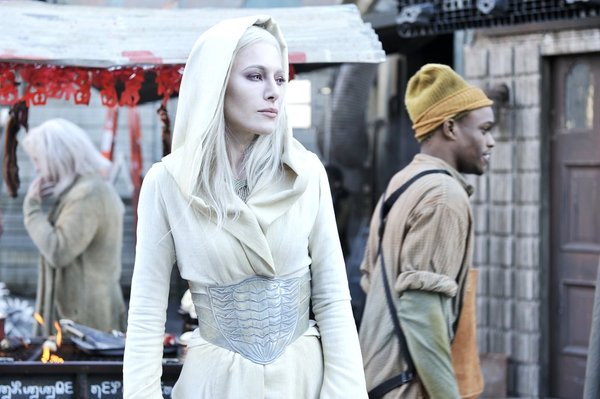 was actually the – worked for the Casting Director and she was the person who read the off-camera lines against the people who were auditioning. And she really, really wanted to have a shot at a role. So I said, “Okay, we can read her.”
was actually the – worked for the Casting Director and she was the person who read the off-camera lines against the people who were auditioning. And she really, really wanted to have a shot at a role. So I said, “Okay, we can read her.”
And she went through many, many, many auditions because the network was very dubious. She didn’t really have any credits. She was a newbie, she was unknown, she was the girl who read the casting sides and she really stuck with all the auditions. And I was so proud of her when she got the part.
And she is – I agree, I think Trenna is a big standout in the show. And I’m happy.
Tony Tellado: Thank you gentlemen, really appreciate your time.
Kevin Murphy: Great.
Operator: Our next question comes from the line of Christina Couch with GetInMedia. Please proceed with your question.
Christina Couch: Hi. I saw your presentation at the South by Southwest Interactive Festival. During the presentation Nick from Trion Worlds mentioned that there were a number of compromises that were made in terms of translation from the videogame to the television – to the TV series and vice-versa.
He mentioned for example, that originally the TV series wanted to have everyone on horses. But for a first person shooter, having people on horses is pretty much a moving target. I wanted to ask, you know, what other compromises did, you know, both sides make in order to make this project really effective?
Kevin Murphy: So flying is one example. That was something that could have been cool in the game. And for us to do that my fear was that it would make everything feel a little too Buck Rogers to have like flying cars. So we decided that we were not going to have that. And that there’s a Stratocarrier that you enter the game in, but it crashes.
Nathan Richardson: Yes, like Kevin was saying is that flight was one of them. And I mean we are even still now exploring, like when we were thinking about, “What do we actually have in our expansions to Defiance,” because you have an aggressive schedule of expansions post-launch. So we’re – we have planting of seeds.
We’re asking ourselves like okay, “What could actually fit here,” 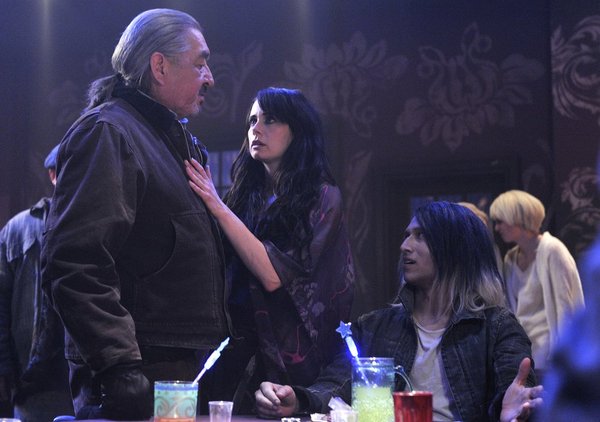 and then we also have to take into consideration what could – with the show, what could merge well together and actually create more compelling stories.
and then we also have to take into consideration what could – with the show, what could merge well together and actually create more compelling stories.
Because when we look at how want to move the game forward, whether we’re doing crossovers at that point in time or whether we’re just thinking forward, we don’t want to paint ourselves into a corner. So that’s kind of like a – it’s a relationship like every other, that you have to be well-aware of each other.
Christina Couch: Okay, thank you very much.
Operator: And our next question comes from the line of Tim Holquinn with TV Over Mind. Please proceed with your question.
Tim Holquinn: So I have a few questions I could direct specifically towards you. I was wondering the ratio of vehicle and equipment design. Do the live action people mostly do that, or is that done from the game first and then they get onto the live action side?
Nathan Richardson: It’s from both. Tthe vehicles they come from both sides. As with the television show, in many cases you would like to at least base them on something that’s currently available or close to, which you would modify. We don’t have that restriction inside the game, of course; we can go pretty much everywhere.
But I mean in terms of which one is more contributing, I think it’s pretty similar even though the reason that people see less in the TV show is simply that it’s a different type of story that’s being told. In Defiance a lot of your travel is vehicle-based. So we have everything from quads up to trucks and stuff like that.
Some of them actually have made ourselves. But a good example is that in the pilot, the car that Nolan and Irisa are driving, it actually didn’t exist in the game itself and it’s actually be – just being finished as we speak.
Tim Holquinn: Okay, I just wondered because I knew that they had to physically build those vehicles and props, and I thought there might be some restrictions.
Nathan Richardson: There are restrictions. For example you will see that we have Dodge Challengers and stuff like that. And that’s not just because they’re good partners and 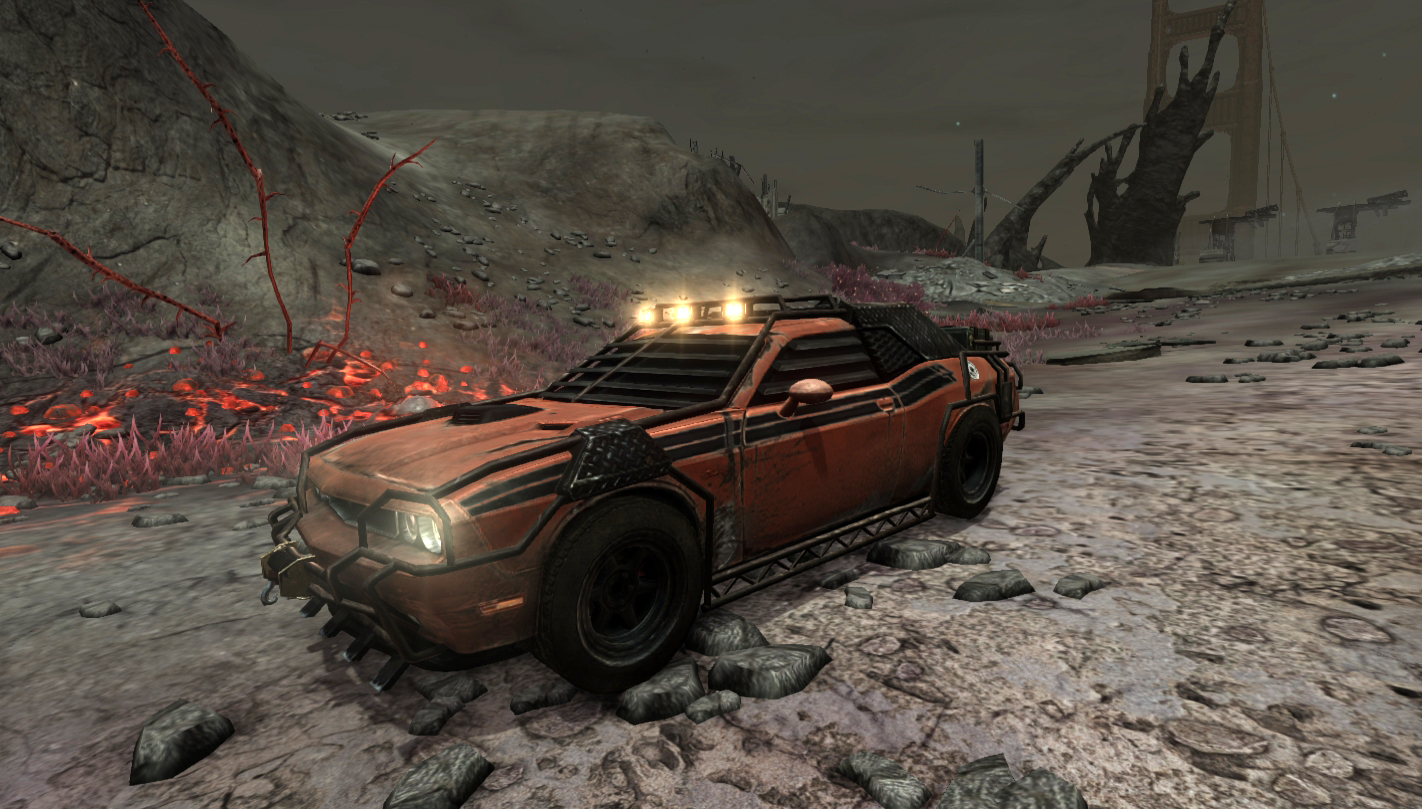 sponsors, it’s because that it fit very well with the universe. Because you want to have a certain amount of alien, futuristic views of it, but you also have to have a certain amount of familiarity to the world.
sponsors, it’s because that it fit very well with the universe. Because you want to have a certain amount of alien, futuristic views of it, but you also have to have a certain amount of familiarity to the world.
Tim Holquinn: Right. Okay, and one quick follow-up here. Will there be DLCs that go back in time to deal with the humanity or the earliest days of the Pale Wars?
Nathan Richardson: No, they aren’t planned. We are very much going from the perspective that you are turning a living world which moves forward. And we’re not going to time travel, at least for – not for now. But no flashbacks.
Kevin Murphy: In the TV series though, because the past does have a big effect on the characters, we do have a number of episodes where we go back and visit moments from the past, things like that.
Tim Holquinn: Okay, and thanks for that. And Kevin, if I could just squeeze in one question here before getting back in line since you’re back on, you know, I was wondering if you know for a fact or have any timetable for when there would be a soundtrack release for Defiance?
I’m a big fan of Bear McCreary’s. And I was wondering, did he score the game as well?
Kevin Murphy: Yes, he scored the game. And yes, our hope is to do a soundtrack. I don’t – there’s not a specific release planned, but Bear has actually created a lot of music for this. And he’s also created pop songs. And he’s created pop songs that are in the various alien languages.
There’s actually a – for example, the – if anyone’s seen the pilot when the Castithan teenagers are dancing, that Groovy song that’s playing is a Bear McCreary original composition that he wrote and recorded. That will be on a soundtrack album.
Sometimes we’ll do things like we’ll come up with this imaginary scenario where we decided that Castithans for some reason, they really liked Frank Sinatra music so they sing their own sort of Castithan version of Rat Pack Swing Music that we hear as source music in the show.
We hear – you know, there’s – we’ve got another piece of music where the idea is that Alak, who is Datak’s son, will introduce at the top of the arch, he runs kind of the Defiance radio station, sort of like Chris in the Morning on the old Northern Exposure show, and played all kinds of like cutting-edge music, which can be Earth and alien music mashup, it could be old work vinyl or it can be something entirely new done by like a local Defiance garage band.
So music is a huge character in the show. And there’s a lot of Bear McCreary music. There’s Bear McCreary covers of popular songs that we’ll be hearing. So it would be a crime against nature for us not to have a soundtrack album because it’ll be awesome.
Operator: Our next question is a follow-up question, comes from the line of Christina Couch from GetInMedia. Please proceed with your question.
Christina Couch: What was your biggest challenge in creating a project like this?
Kevin Murphy: I think the biggest challenge is figuring out each other’s sort of like nomenclature and process.
Nathan Richardson: Yes.
Kevin Murphy: Coming into this, I didn’t know anything about how a videogame is put together.
And I think on the Trion side they didn’t have any idea of how a TV show is put together. Like it was – the truth is for this sort of television, the idea for the episode usually is, you know, you’re breaking the story maybe six weeks before you actually go before a camera, which seems really, really fast.
And I think it was a little shocking for our partners at Trion when they were saying, “Yes, well we don’t know that because we haven’t gotten to breaking that episode yet.” And then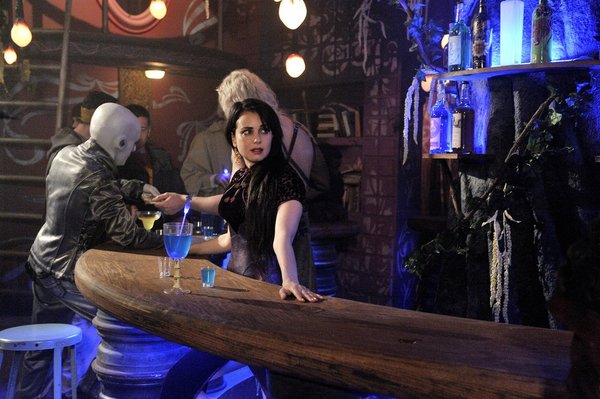 it’s suddenly, “Okay, now we’re breaking the episode. Sorry, we shot it.” It just seems incredibly lightning fast.
it’s suddenly, “Okay, now we’re breaking the episode. Sorry, we shot it.” It just seems incredibly lightning fast.
And for us, you know, the amount of lead time that’s required because every single thing that is in the game has to be lovingly created and digitally rendered. It’s very difficult for them to make a small change.
So when we call and say, “Oh can you just maybe tweak this one thing or this one look or this one color,” and they would look at us like, “You’re crazy.” And then we realized, “No, I guess they really can’t.” And I think that educational process for me I think was the biggest challenge.
Nathan Richardson: Yes it’s very much that understanding because like we’ve just gone through in some of the previous questions is that they rely a lot on actually learning about each other and how we actually do things because if we turn this around in terms of a television show and how that is made versus how a game is made is that you do a lot of the shooting in a TV show, and then you do a lot of post-processing.
With a game, there is no pre and post-processing as such, that’s the – just done runtime in the game itself. We are always creating the full 3D assets. That takes considerable a lot of time, especially when you have a lot of terrain. Like recreating the – lots of parts of the San Francisco Bay area.
But secondly, I’d also say that one of the challenges, especially for me coming into this, is that creating a television and a game, which is not only just a game, it’s a massive online game on Xbox, PlayStation 3 and PC, and they’re all connected together. This is the kind of mild insanity that intrigues me.
Christina Couch: Thank you.
Operator: Our next question comes from the line of Suzanne Lanoue from The TV MegaSite. Please proceed with your question.
Suzanne Lanoue: Hi. I haven’t seen any of the episodes yet but I’m looking forward to it with all the information that Syfy’s been sending us.
Nathan Richardson: I hear it’s pretty good.
Suzanne Lanoue: It seems like a very ambitious project and a lot of – two companies at least, two or three companies behind it, a lot of publicity. I was wondering how many episodes or seasons has Syfy committed to for the television show?
Kevin Murphy: They’ve committed to Season 1, and we are now in the process of like – of sort of like story breaks for Season 2. But we won’t actually get a Season 2 pickup until after the first episode has aired. And we expect that probably the date that you will probably get the word of it around mid-May.
Suzanne Lanoue: Okay, so I was – what I was wondering was the tie-in with the game, how will that effect – if say I mean I don’t want to jinx anything, but if the TV show doesn’t last more than a season or two, how will that affect the game?
Kevin Murphy: You’re killing me here.
Suzanne Lanoue: Sorry. I hope it lasts a long time.
Nathan Richardson: So part of why these both are like additive experiences in terms of if you watch the show, you don’t have to be playing the game to get the entire context.
That’s just a part of a business decision for both of us in terms of that we are not inherently tied to each other on that level. The thing is that, like now we’re going through Season 2, even though it’s not fully green-lit, what we’re doing is still compelling storylines on both sides.
And the moment that we’re green-lit, because I have no doubt in my mind of course, is that preparation work and all the stuff that we’re doing now, it will be fully contextual still and relevant and immersive.
Suzanne Lanoue: So the game will continue on?
Nathan Richardson: Yes, absolutely.
Operator: And our next question comes from the line of (Fidel Orantus) please – from (Reformer) newspaper. Please proceed with your question.
(Fidel Orantus): Hi guys, thank you for your time. My question is, “It’s a big challenge to create, let’s call it a franchise, between the game and the TV show, why did you decide to do both things at the same time?”
Kevin Murphy: Well I think one – the big reason is because no one’s ever done it before. And one of the big challenges, as we move into sort of what many people are calling a golden age of television and of gaming, is people are really looking for what – you know, you hear a lot of talk about second screen applications and experiences.
So the idea here is to take that idea of a second screen presence and building it into the DNA of the actual project. And I think that that creates a form of entertainment that is not available elsewhere. And I think that with so many great games and so many great television shows on right now, creating something that sort of cuts through the clutter and noise is something that no one has ever seen before.
And that’s one of the reasons that I was attracted to be involved with the project because I love this particular challenge of figuring out how to make it work.
Nathan Richardson: Yes I mean, it’s definitely the challenge. And it’s – even people often ask like, “Why would you try to start a new franchise,” and think about it that way.
But you really should be thinking from a different version, is like if nobody starts trying to kickoff new franchises, new intellectual properties and worlds, we’ll be watching like Call of Duty 9 and Rambo 13 in a couple of years. And I don’t – for me that’s not a very compelling future.
So I mean, everybody is trying to – like find and figure, “What is the new form of entertainment which is going to be interesting to people,” and this is one approach. I believe it’s a good approach. It’s risky of course. That’s the reason why people haven’t taken it on. But I think we’re going to do – we’re going to be doing some amazing things.
(Fidel Orantus): Okay. And there’s just been a lot of TV shows about alien invasion. Some of them have success and some of them didn’t. But what makes you think that Defiance is going to be a success in the game and in the TV show?
Nathan Richardson: We have more aliens and some of them love each other.
Kevin Murphy: The other thing is that what’s sort of unusual about this I think is maybe a reason why, you know, if it you know, no one ever knows why anything is or is not successful, but my thinking is that this is not simply an alien invasion show.
This is really more of a melting pot immigrant drama, in that these aliens, the Votans, seven different races, they don’t necessarily like one another. They – back on their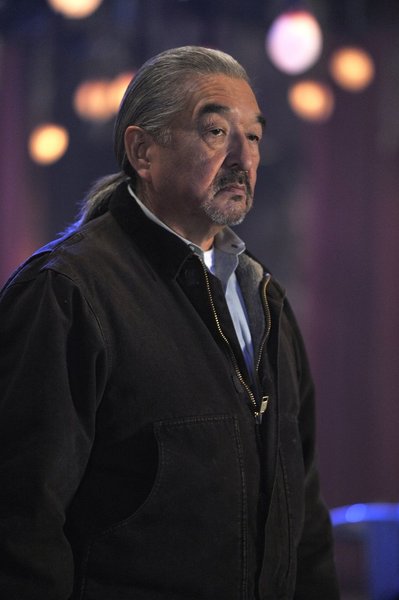 home world they may have been enemies, one race may have conquered the other. They came together out of necessity because their own solar system was about to be destroyed and it was, “Come together or die.”
home world they may have been enemies, one race may have conquered the other. They came together out of necessity because their own solar system was about to be destroyed and it was, “Come together or die.”
So we are in a world where old millennia long prejudices exist within the Votans. Humans are now in the mix. And everyone’s got shared history, shared alliances, shared cultures. And it’s really about, “How do you get together in a new world with all of these different perspectives and musical and cultural perspectives.”
So that’s very different from like an alien invasion show or something like Falling Skies. And you know, and we’re hoping to kind of stick out. And I think Falling Skies is a perfect show. And two of our writers, (Weddow) and (Thompson) actually worked on Falling Skies.
But we’re trying to do something that’s kind of in a different sandbox. I think doing something different is the best way to be successful with an audience. So that’s the plan at least, and I’m sticking to it.
(Fidel Orantus): And why did you decide to broadcast the show in many countries just one day after the show is going to be on TV – in the U.S. TV?
Nathan Richardson: That’s just one of the reasons why we have crossover lens and why it is an interconnected experience for people, is that there is a certain timeline in the world which both the TV and the game exists. So if you would see the – one of the episodes too late, they would have clashed and already moved on in the game world.
(Fidel Orantus): Okay. So it’s – the game going to affect too much to the TV show?
Nathan Richardson: No, no, it’s more that it – we share a common timeline as such.
Operator: And our last question comes from the line of Laura Mastantuono from SpoilerTV. Please proceed with your question.
Laura Mastantuono: Hi, my question was for Kevin mainly I think, it was related to the production, how much time does it take to – between the filming of each episode and the filming going to the editing room and the challenge in between.
Nathan Richardson: Okay, I would love to answer, but I was not the person that made the TV shows. Is Kevin on?
Laura Mastantuono: Yes, I’m sorry.
Nathan Richardson: No, no, it’s nothing to be sorry about. But I mean, I can tell you that I believe the TV show finished filming in, was it November? Then the post-processing starts. Before that, as I understood it from the various crew and cast members is that the TV show was filmed in a pretty fast way and over a short period of time.
But it’s been a really rapid process in the last year or so, especially because that’s when we’ve been solidifying also, the crossover events and solidifying the timeline in the story.
Laura Mastantuono: Okay, perfect. So they film all the episodes first and then did a post-production of everything together?
Nathan Richardson: Yes. Yes, I mean that’s usually how they do TV shows. And then of course the month before that we are working out of the stories that we’re telling and making sure they fit each other, like he said earlier that I mean, “We have people talking together nine or ten times a day.”
Laura Mastantuono: Okay, thank you.
Maureen Granados: Great, so I think we will wrap it up for this call. Thank you everyone so much for your questions. And apologies for our little tech issues. Nathan, thank you for taking that last question, it was exactly correct.
Nathan Richardson: Sure, no problem.

